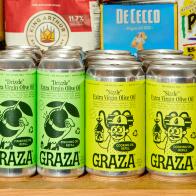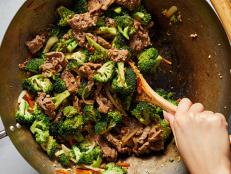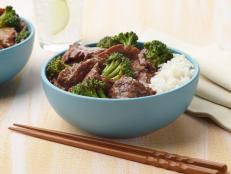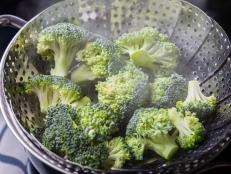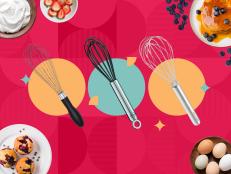How to Use a Masala Dabba, According to the CEO of a Spice Company
Popular in Indian kitchens, masala dabbas are brilliant spice storage containers, but also so much more.


Melati Citrawireja/Photo courtesy of Diaspora Co.
It’s no question that a kitchen stocked well with spices is one primed to cook meals full of flavor. It’s always one pinch of cinnamon, or one generous spoonful of cumin that bring a dish to life. But anyone who’s cooked even a handful of varying dishes will tell you that spice storage – and all the chaos it can bring if left unchecked – is simply the price one pays for good food.
Among a sea of spinning carousels and in-drawer organizers, there’s the masala dabba – a spice container popular in Indian kitchens – that shines not only because it’s a brilliantly designed storage unit, but also because it doubles as a cooking tool – and sometimes even triples as a family heirloom.
Masala dabbas are boxes, often in the shape of a circle or square, that usually hold up to seven spices. Rather than having to open several individual bottles or bags, the katoris, a.k.a. the smaller bowls that hold each spice, are kept open inside, with each equipped with a tiny spoon. The spices stay fresh with a single large lid, fit for the dabba itself.
To learn how to best use one, we chatted with Sana Javeri Kadri, the founder and CEO of Diaspora Co., a company that prides itself on sharing fresh, single-source spices, and creating a more equitable spice trade in the process. In partnership with design studio Tiipoi, Javeri Kadri and her team also recently launched the company’s take on a masala dabba. Here’s what she had to say.
Fill It with Favorites
To get a masala dabba set up, you fill each katori with spices you use most regularly. For Javeri Kadri, that’s turmeric, cumin, coriander, salt and two varieties of chili powders – one that’s smokier and hotter, one that’s milder and sweeter. “And some cardamom because I tend to put my pepper into my pepper mill. And then the middle of my masala dabba has salt, so that I’m using the spices and the salt all together.”
Once you’ve chosen which spices to keep in the dabba, you need to decide which ones should stay covered, and which ones are good to stay open. “If you’re leaving a spice open with six other spices next to it, over time, those smells do start to get mixed together. And you start to lose some aroma. So, for example, with my cardamom, which I’m not using as often … or something that has a very fragile, delicate aroma, that I want to hold onto … I actually keep it closed while it’s in the dabba. I lid it. Whereas everything else is open.”
Keep It Relevant
Every couple of months, Javeri Kadri reviews her dabba and asks herself, “‘What am I using more of in the dabba? What am I then having to reach into the shelf for? And if there’s something that I’m suddenly reaching into the shelf for more, should I swap it out for something in the dabba?’”
The idea is to keep your dabba as useful as possible, constantly ensuring that it truly contains your most-used spices. “’Cause if it has your top seven, you’re gonna use it more. You’re gonna hold onto it more.”
Little Spoons Make a Big Difference
And make sure you have small spoons in each katori. “If you don’t have custom spice spoons, what I’ve seen done is just getting a plastic spoon and breaking off part of the handle. And that makes it into a janky little spoon.”
Once each spice has a spoon of its own, it lives in there. You can portion spices into dishes seamlessly without having to change spoons, cross-contaminate and worry about washing a ton of utensils just to get your dishes seasoned just right.
It Might Be Worth Having Two
While it might feel the most streamlined to have one dabba and commit to seven spices, it’s not uncommon to have more than one.
Javeri Kadri mentions some folks have “one for North Indian cooking, one for South Indian cooking.” Or “one for Western cooking, and one for traditional Indian cooking. I have two – I have one for baking and Western flavors. So it has cinnamon, cloves, cardamom – like it’s my dessert dabba. And I have one that’s for my daily, savory cooking. A lot of families have two for different purposes. I think that’s an ode to the fact that the different cuisines of India are vast. Like there’s so many, depending on which region you go to.” Some households, especially when they are multi-cultural or -regional, are actually cooking “completely different cuisines in the same kitchen.”
Think of The Dabba as an “Extension of Your Body”
On its most basic level, a masala dabba is a storage container – “I grew up using one, so if I thought about spices, I thought about them being stored in a masala dabba. That’s the most natural way that I think of storing and organizing spices.”
But Javeri Kadri emphasizes that the allure of a dabba is “beyond being a beautiful spice storage tool;” it’s also a cooking tool. “The point is that you have all your lids of your jars open in the dabba with spoons inside each jar or katori … the image in my head is of our family cook holding the masala dabba on her hip, and just spooning spices into her dish, tasting and then deciding what she needed more of, or what she needed to not use. So, it becomes an extension of your body because you’re holding this thing, this box full of spices and using it to make sure your food is well-seasoned.”
This seamless access to a spice trove promotes intuitive cooking – a way of putting a dish together that leans less on precise recipe measurements, and more into your taste buds and the mood du jour. “You create your flavor base of ‘This is what I’m going for,’ and from there, I freestyle. Now, my sundubu jiigae, my Indian dal or even my Thai curry is pretty freestyled based on what’s in the fridge. It’s really fun to think, oh, you know, ‘Today, I want a milder, more tomato-forward chili.’” And another day, “‘I want like a spicy, smoky, more savory-note chili.’”
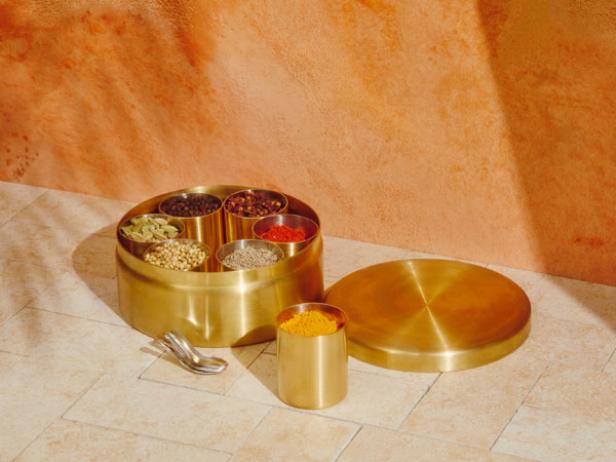
Andria Lo/Photo courtesy of Diaspora Co.
Treat It with Care
Depending on how they’re made, dabbas can serve simply as utilitarian kitchen tools, while some can become family heirlooms. Javeri Kadri still holds her grandmother’s dabba close. “When she got married, she got her new name engraved on the side ... I was able to inherit her dabba and it’s part of my life now.”
Not coincidentally, Diaspora Co.’s rendition of a masala dabba is also made of brass – hand-spun, well-crafted and gorgeously designed. “I guess I’m hoping that we can also create heirlooms like that.”
You can also get a stainless steel dabba that will last you forever for a fraction of the cost. “It just won’t necessarily look as beautiful and stunning. We made a design choice to recreate what our grandmas use … Whereas stainless steel on the market is associated with a more everyday thing. A lot of the joy and magic and beautiful design has been taken out. It’s been stripped of its soul … We wanted to bring some of the design and the joy back.”
Related Content:












